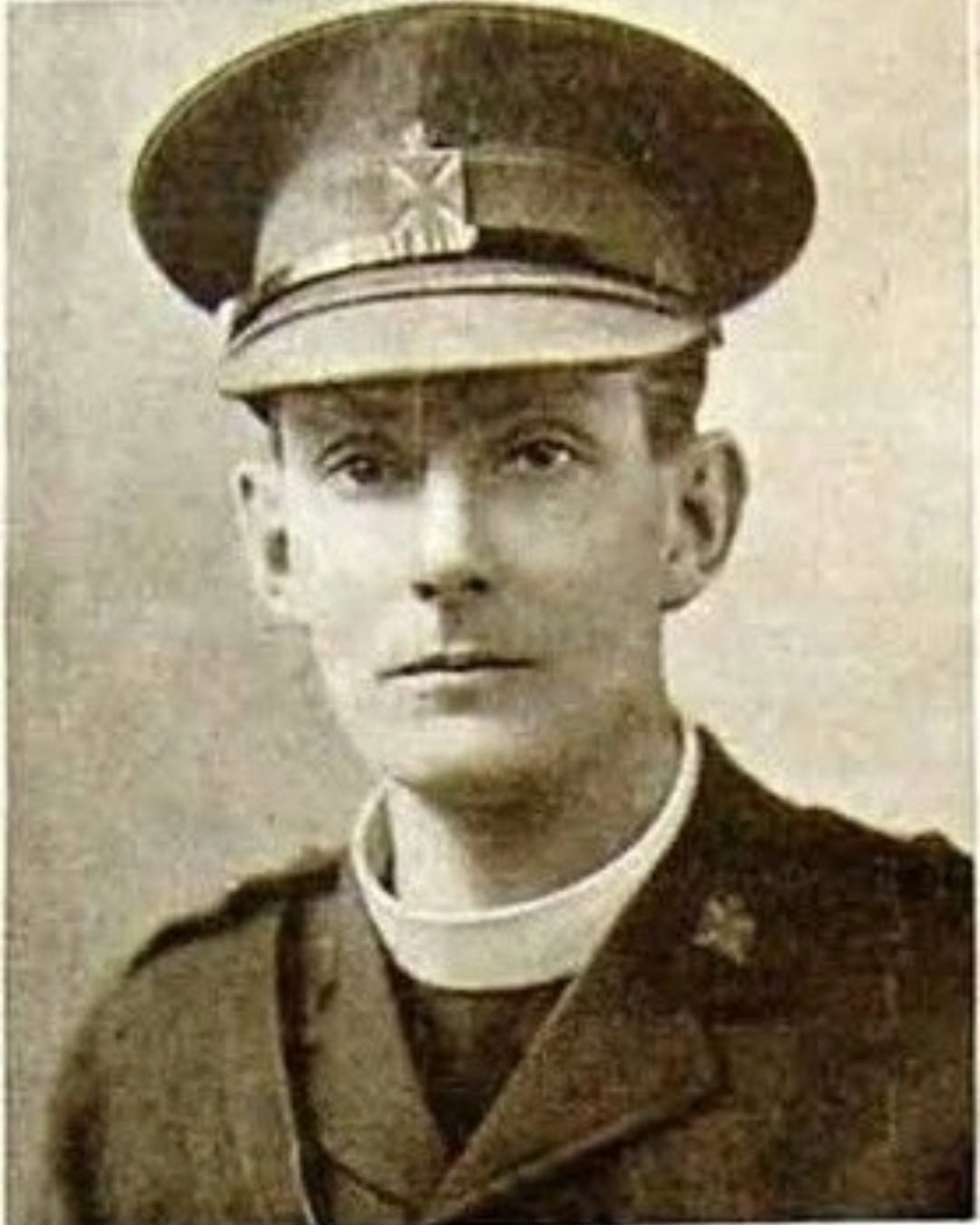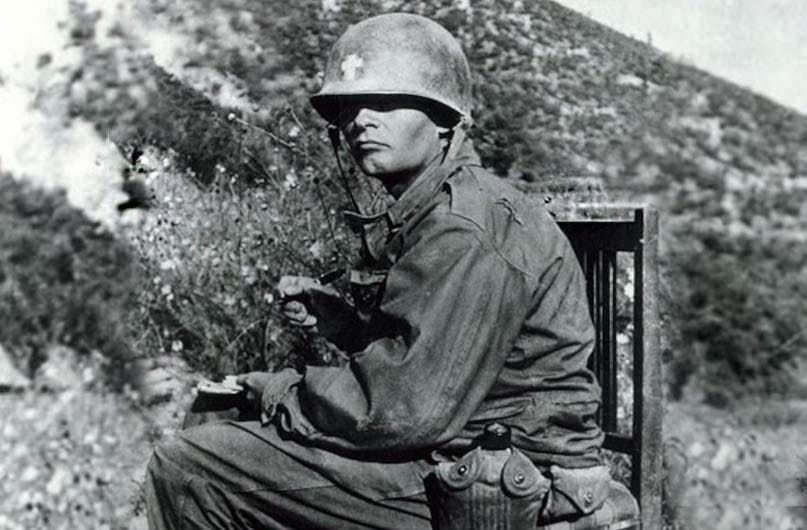Modern Military Monks
Who are they?
"Yea, though I walk through the valley of the shadow of death, I will fear no evil: for thou art with me; thy rod and thy staff they comfort me." - Psalm 23:4 (KJV)
Armed Forces Day in the UK, marked this year on Saturday 28th June 2025, is a time to honour those who serve and have served on the battlefield. But there’s a group often overlooked in the stories we tell. Not soldiers with rifles, but men with rosaries and Bibles. Chaplains. Priests. Monks in uniform.
Throughout modern warfare, there have been brave souls who walked into gunfire not to fight but to comfort the dying. Men who carried no weapons, yet ran toward danger. They were not warriors by trade, but by calling. This is modern militant monasticism, a way of living and dying rooted in faith, service, and sacrifice.
Today we will recognise and remember some of these Heroes.
Woodbine Willie: Fragrance of Faith in the Trenches
The Revd. Geoffrey Studdert Kennedy, better known as “Woodbine Willie,” was an Anglican priest who served as a chaplain in World War I. He didn’t stay behind the lines. He went into no-man’s-land with the troops, often under shellfire, to bring comfort, prayer, and presence.He handed out Woodbine cigarettes and Gospels alike, hence the nickname. He believed in meeting men where they were, with grace and grit.
At the Battle of Messines in 1917, he was seen running into no-man’s-land to assist stretcher-bearers and give last rites to soldiers under heavy fire. For this act of gallantry, he was awarded the Military Cross. His ability to blend spiritual comfort with raw battlefield courage left a lasting impression on soldiers who recalled him as a man of “infinite compassion and fearless devotion.”
The Victoria Cross Chaplain: Rev. Noel Mellish
The Revd. Edward Noel Mellish was the first chaplain to receive the Victoria Cross, Britain’s highest military honour. During the Battle of St. Eloi in 1916, he made repeated trips into no-man’s-land to rescue wounded soldiers.
He did this not once or twice, but for three days straight under heavy machine gun fire. He saved over 30 men, refusing to stop even when ordered to retreat. His courage was not found in combat, but in compassion.
‘On three consecutive days of heavy fighting near Ypres in March 1916 he went to-and fro continuously between the trenches, attending to and rescuing at least 22 wounded men from an area that was swept by machine-gun fire.’
A Jesuit on the Front: Father Willie Doyle
Father Willie Doyle, an Irish Jesuit priest, served as a chaplain to the 8th Battalion of the Royal Dublin Fusiliers during World War I. Known for his joy, wit, and spiritual dedication, he made it his mission to minister to all soldiers regardless of faith.
During the Battle of Passchendaele in 1917, he was last seen running through shellfire to reach wounded soldiers. He was killed by a shell while trying to rescue two stretcher-bearers. Witnesses described his death as a “saintly sacrifice.” Soldiers treasured his spiritual support, and his battlefield diary, later published, reveals a deep interior life of prayer and penance. His cause for canonization is currently being promoted by those inspired by his heroism.
Bravery Under Fire: Rev. Theodore Hardy
The Revd. Theodore Bayley Hardy, a Church of England priest, joined the British Army as a chaplain at the age of 54. He was awarded the Victoria Cross, Distinguished Service Order, and Military Cross for his exceptional bravery under fire.
At the front, Hardy became known for visiting wounded soldiers during active bombardments. In one instance, he crawled through barbed wire and exposed positions to carry water and bandages to the dying. General Haig once called him “the bravest man I ever met.” He was fatally wounded by machine-gun fire in 1918 while helping a wounded man near the front line.
Father Francis Gleeson: A Shepherd Among Wolves
Father Francis Gleeson, an Irish Catholic priest, served as chaplain to the 2nd Battalion Royal Munster Fusiliers during the early years of World War I. On the eve of battle near Rue du Bois in 1915, he stood before the battalion and gave general absolution to every soldier, many of whom would die the next day.
His gesture became iconic, captured in accounts and memorial paintings. Gleeson remained in the trenches with the wounded and refused evacuation. He is remembered not only for his bravery but for building bridges between Catholic and Protestant troops in an era marked by sectarian division.
Chaplain Emil Kapaun: Saint of the Korean War
Father Emil Kapaun, a U.S. Army chaplain and Catholic priest, served with the 3rd Battalion, 8th Cavalry Regiment during the Korean War. During the Battle of Unsan in 1950, he risked his life to drag wounded men to safety under fire. After being captured, he refused special treatment from the Chinese because he was a chaplain.
In the POW camp, he stole food for the starving, washed the wounded, and held secret services to maintain morale. He died in captivity in May 1951. In 2013, he was posthumously awarded the Medal of Honor, and his cause for sainthood continues to advance within the Catholic Church.
Martyrdom in Korea: Chaplain Herman Felhoelter
Father Herman Felhoelter, a U.S. Army chaplain and Franciscan priest, served with the 7th Cavalry Regiment during the Korean War. On July 16, 1950, during a retreat near Taejon, he stayed behind with wounded soldiers as North Korean troops advanced.
Eyewitnesses reported that he refused evacuation and was last seen kneeling in prayer over the injured. He was executed by enemy troops shortly afterward. His sacrifice earned him the Distinguished Service Cross and continues to be remembered in military chaplaincy circles as a model of ultimate pastoral courage.
The Four Chaplains: Unity in Sacrifice
On February 3, 1943, the USAT Dorchester was struck by a German U-boat torpedo in the icy waters of the North Atlantic. As panic swept the ship, four chaplains moved calmly among the men, offering prayers, calming the frightened, and helping others into lifeboats. They were:
Lt. Alexander D. Goode (Jewish), Lt. George L. Fox (Methodist), Lt. Clark V. Poling (Dutch Reformed), Lt. John P. Washington (Catholic).
When the supply of life jackets ran out, all four chaplains removed their own and gave them to soldiers who had none. Survivors later reported seeing the chaplains standing together on the deck, arms linked, heads bowed in prayer, as the ship slipped beneath the waves.
Their sacrifice became a lasting symbol of interfaith unity and selfless service. In 1961, Congress established February 3 as "Four Chaplains Day" in their honour.
These chaplains remind us that there is more than one way to fight. There is more than one kind of courage. Their battlefield was the human soul. Their mission was mercy. Their uniform was God.
In an age where violence and confusion dominate headlines, their example calls us back to something older, deeper, and more powerful: the witness of selfless love.
In doing so, they showed us what it means to live and die as militant monks in a modern world.
"Greater love hath no man than this, that a man lay down his life for his friends." — John 15:13










